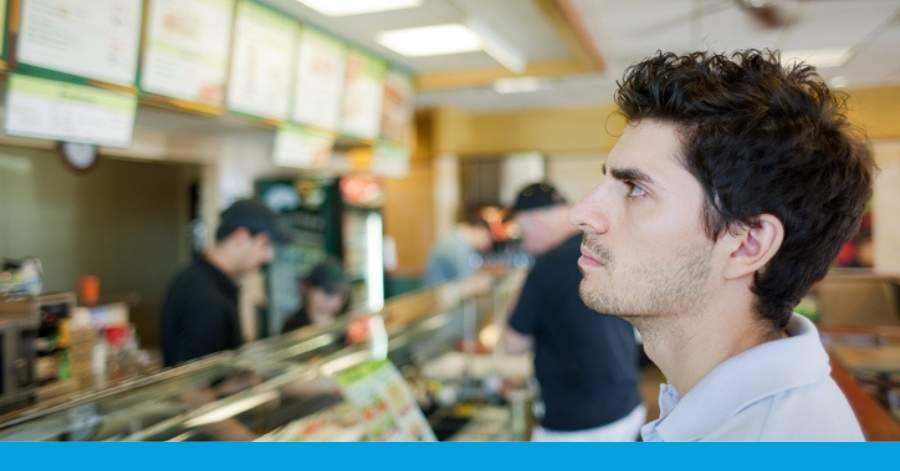QSR Guest Experiences: Insight Into Tech’s Impact [Latest Data]
When it comes to quick-serve restaurants (QSR), one thing is clear: customers crave speed, convenience, and good food. But with an overwhelming...
6 min read
Sarah Beckett March 13, 2025

Imagine this: Peter is hungry and in a hurry for something satisfying to eat. He pulls into a drive-thru, but the menu is cluttered, the line is long, and the speaker is barely audible. Or maybe he's scrolling through UberEats, but the restaurant he wants has confusing prices and limited customization. What should be a quick meal for Peter turns into an annoying experience.
Getting your favorite meal should not be too hard, but small moments define the experience. A fast, well-designed drive-thru, welcoming dine-in, and reliable delivery keep customers satisfied, while delays and confusion push them away.
This blog explores 5 key micro-moments that shape customer satisfaction in restaurants and how QSRs can manage them at each touchpoint.

Peter’s hunger has piqued after watching YouTube cooking shorts. When he starts looking for food, your restaurant should be his first choice. If it’s not easy to find or the menu’s unclear, he’ll quickly move on.
64% of mobile restaurant searches result in an order within the hour, and Peter is no different. Once he’s made his decision, whatever touchpoint he chooses—dine-in, drive-thru, third-party platforms, or takeout—he would want a smooth and effortless experience from start to finish.
While QSRs can’t control what customers crave, they must ensure the process is seamless once that decision is made.
Peter walks into the restaurant, eager to satisfy his hunger, but the line at the counter is long and slow, and the staff seems overwhelmed. As he stands there, he thinks, "If I didn’t want this so badly, I’d be going somewhere else." By the time he orders, he's not happy with the experience. And he’s not alone as customers expect a fluid ordering process. In fact, 20% would walk away from a fast-food restaurant if there wasn’t an option like self-serve kiosks to speed things up.
No matter the channel, customers want to place their orders easily. Let’s explore how different strategies are driving speed and convenience across these ordering methods.
Peter is about to pay for his meal, but the card reader takes longer than expected to process. He glances at the screen—extra steps and delays make the process feel more complicated than it should be. Eventually, the payment goes through, but it leaves Peter uneasy about the transaction.
Long checkouts at a QSR are uncomfortable, especially with other customers waiting behind to order. 41% of customers prefer contactless payment methods like tap-to-pay, digital wallets, or QR codes to speed up the process. To meet these expectations, QSRs need to make payment touchpoints efficient as the rest of the customer experience.
After Peter orders, he waits at the counter, unsure of what’s going on. The staff is clearly overwhelmed during the busy hour, and no one takes the time to confirm his order. When he presses for more information, his meal is handed to him rudely, with no greeting, as the staff rushes to handle other customers. Peter can’t help but feel alienated and undervalued. Just like he might not, 51% of customers will never return to a restaurant after a negative service experience.
Whether at the counter, drive-thru, or curbside pickup, attentive and friendly service at every touchpoint is key to customer satisfaction.
Peter finishes his meal, and as he reflects on the experience. He’s disappointed, but he decides not to say anything—after all, what's the point? The next day, Peter leaves a negative review online, and suddenly, the restaurant has lost a customer.
86% of diners read reviews before deciding where to eat, and waiting for complaints to surface online is a risky game. The smartest brands don’t wait. They collect feedback in real time, using insights to fix issues before they become bigger problems.
The best time to collect feedback is before it goes public. Employees can follow up after the meal or QSRs can offer small incentives through the mobile app, encouraging customers to share their thoughts directly.
Intouch Insight’s survey tool helps QSRs gather general feedback, post-transaction feedback, track CSAT, CES, and NPS scores, and monitor satisfaction across all customer experience moments. With a steady stream of insights, restaurants can spot weak points and fine-tune customer service.
And if reviews do pop up, it’s critical to respond as 88% of customers are more likely to buy from a restaurant that responds to both positive and negative reviews.
Read more on how to improve guest experience with data from feedback surveys.
Read more on this in our 2024 Emerging Experiences Study.
Great food isn’t enough. Customer satisfaction in restaurants comes from consistency at every touchpoint. For Peter or any other customer, every micro-moment shapes their experience. Without structured feedback, identifying pain points or positive moments is just a guessing game.
Are you measuring customer satisfaction in restaurants where it matters most? Intouch Insight’s survey tool will help you spot friction points, gather actionable insights, and improve every micro-moment.
![QSR Guest Experiences: Insight Into Tech’s Impact [Latest Data]](https://www.intouchinsight.com/hubfs/website/intouch-insight/blog/qsr-guest-experiences.jpg)
When it comes to quick-serve restaurants (QSR), one thing is clear: customers crave speed, convenience, and good food. But with an overwhelming...

Think back to your last pizza order. The craving was sky-high, and you were hoping for the whole experience to hit just right, from the first...

In the dynamic, competitive restaurant industry, every customer interaction counts. Whether through efficient drive-thru lanes, user-friendly...